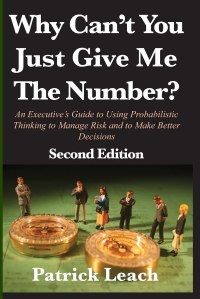
Why Can’t You Just Give Me The Number? An Executive’s Guide to Using Probabilistic Thinking to Manage Risk and Make Better Decisions
by Patrick Leach
Decisions can be based on a deterministic calculation only in conditions of certainty, that is to say the input parameters are known quantities. But strategic decisions are often made in a context of uncertainty and complexity, where a definite answer is unknowable, so we must turn to probabilistic thinking.
Uncertainty. “I make the case that all value generated by business executives comes—directly or indirectly—from how they manage uncertainty. Without uncertainty, a share of a company’s stock is effectively a bond, with guaranteed future cash flows. Guaranteed bonds don’t need management. But stocks (or rather, companies issuing stock) certainly do.”
Continue reading “Why Can’t You Just Give Me The Number?”





